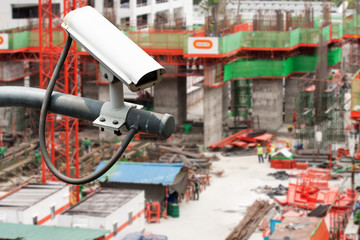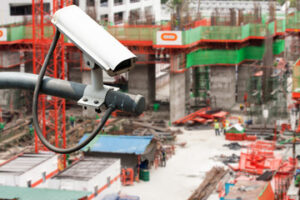 A security camera can protect you from various crimes. However, the technology is susceptible to hacking and other conditions that may disable it. For more information, click DMAC Security to proceed.
A security camera can protect you from various crimes. However, the technology is susceptible to hacking and other conditions that may disable it. For more information, click DMAC Security to proceed.
The best surveillance cameras have high sensitivity, which allows them to work in low-light environments. They also use cloud storage to keep footage safe and accessible even during an internet or power outage.
The obvious purpose of security cameras is to protect homes and businesses from intruders. However, some newer security camera systems provide an active deterrence feature as well. These cameras allow users to control a bright LED warning light and siren that can be remotely triggered when motion is detected, or in response to an alert that is triggered by the camera’s microphone. These features make the camera a very effective deterrent and allow you to actively prevent an event from occurring rather than simply reacting after it happens.
This technology can be especially helpful for small businesses with unmanned lobbies or docks where employees are not present during the day or after hours. The lights and siren can be activated when someone approaches the door or gate, preventing them from entering the property. This can be a very effective way to deter criminals from stealing or vandalizing the equipment inside.
Other active deterrence features include a microphone and speakers. Many cameras come with a voice that can tell anyone who approaches the camera that they are being recorded and may be subject to prosecution. The Vivint Outdoor Camera Pro is a good example of a camera with a built-in voice and a 104-decibel siren that will play a tune and flash red and white lights to warn the intruder that they are being watched and will be punished for any crimes committed on the premises.
Some security cameras also come with tamper-resistant hardware and mounts that can keep the camera from being tampered with or disabled, while some systems have anti-tampering alarms that will alert users if the system is tampered with or disabling occurs. Some camera systems can even be configured to automatically notify local authorities if an attempt is made to disable the camera or the system.
While research shows that visible security cameras can act as a crime deterrent, it’s important to remember that any surveillance system is not foolproof. In fact, studies by Queen’s University Surveillance Studies Centre found that only about half of the cameras they studied were able to produce evidence in court due to technical failures. Whether it’s panning at the wrong time, failing to capture an event or losing a clear picture in poor weather, technical problems can reduce the effectiveness of security cameras as a crime deterrent.
The main function of security cameras is to capture footage. This is usually done by using sensors that detect movement and trigger the camera to record. But some cameras also have audio capabilities as well, which can be helpful in certain situations. For example, some devices allow you to hear the sound of a car driving off, which is useful information if you are trying to locate the vehicle. Other cameras combine audio with video recordings, which can be particularly useful for analyzing events that took place outside the camera frame.
When deciding whether to purchase security cameras with microphones, it’s important to keep in mind the laws regarding privacy and recording. In general, you can legally use security cameras to record images and audio in public spaces if you display a sign telling customers that their conversations are being recorded. Similarly, in some states (such as California, Connecticut, Florida, Illinois, Maryland, Massachusetts, Michigan, Montana, Nevada, New Hampshire, Pennsylvania, and Washington) you can only record audio in the workplace if you have the express consent of all parties involved. In other states (such as New York and Texas), you can only record audio in private spaces if it is clear that the person has no reasonable expectation of privacy.
If you want to record audio, most modern IP security cameras have a microphone built into them. These can usually be turned on or off from the app you use to control the camera. Traditional CCTV, on the other hand, doesn’t usually have audio functionality since it uses coaxial cables that don’t support audio transmissions.
To determine if your camera has an audio function, look for a speaker on or behind the device. Many modern cameras also have indicators that show if they are recording or not. These can include a red light, which suggests that the camera is recording. Indicator lights on the camera may also have different colors depending on their functions, such as a blue light for motion detection or an infrared light for night vision.
Another way to test if a security camera has audio capability is to make loud noises while blocking the lens of the camera. If you can hear the sound of the camera picking up the noise, then it likely has microphone capabilities.
One of the most common functions that security cameras can provide is motion detection. With this feature, a camera will only record when it detects movement in its field of view and can be set up to notify you when that happens. This is a great function that helps to conserve hard drive space and ensures that only important footage is recorded.
While there are a variety of ways that a camera can be set up to detect movement, the most popular is through passive infrared (PIR) sensors. These sensors notice changes in ambient infrared energy and react to body heat, identifying people and machinery that are distinctly different from the surrounding environment. The downside to this technology is that it can sometimes trigger false alarms due to other environmental factors like changes in temperature and even flashes of light.
For this reason, many security camera manufacturers provide additional features that help to reduce the number of false alerts that are generated by a particular camera. For example, many cameras will allow you to edit a camera’s sensitivity and threshold settings, meaning that you can change the range within which a camera will recognize a certain amount of motion as well as the level at which it begins recording.
Another type of motion detection is person detection, which is an advanced function that uses the software in a camera’s centralized recorder to determine standard features of men and women and distinguish them from animals or vehicles. This functionality also allows you to edit a camera’s settings, enabling it to alert you only when it is detecting a person and not other movements, such as trees blowing in the wind or cars driving by.
While this function is not available on every security camera, it can be a helpful addition to any home or business. Depending on the system, this feature can be used to monitor an area while you are away, allowing you to know if someone has entered your property without permission or if they have tampered with anything of concern.
Unlike passive surveillance systems, which can only provide video footage after a crime has occurred, live monitoring takes a proactive approach to security. It allows property owners to work with a team of security professionals who can monitor their properties in real time and respond quickly to any threats that are detected. They can also take notes of any potential issues, whether they’re a crime in progress or a protocol violation.
This type of monitoring is possible thanks to the advancements made in cameras and software. Many newer systems are now able to detect motion, sound and movement in a room without needing to be manually activated. They can then automatically send alerts to the owner, allowing them to keep an eye on their premises even when they’re away. This is particularly helpful for businesses that operate outside of their office buildings, as they can be sure that they’re receiving notifications when something happens.
However, it’s important to note that introducing surveillance technology into a residential care setting can be challenging. In one study, eldercare staff in nursing homes stated that the training provided by the supplier of the cameras was not adequate for practical use. They were often given incorrect information and had to solve technical problems themselves.
In order to avoid these difficulties, it’s vital to involve a team of experts in the planning process and ensure that the technology fits the context in which it will be used. This will help to reduce the risk of the technology being misinterpreted and causing privacy concerns. In addition, it’s important to communicate clearly with the eldercare staff about the reasons for installing the cameras.
While remote video surveillance is widely used in public spaces, it’s also becoming increasingly common in private residences and businesses. These systems are able to provide an extra layer of security and can be used to monitor building access, track employee productivity, and ensure compliance with company policies. They can also be used to detect any unauthorized activity and notify the police immediately, saving valuable resources for responding to actual incidents.


 Deterring Crime
Deterring Crime